 |
 |
 |
| Packing a container with palletized cargo without interlayer dunnage | ||
If the packages are strong enough, they can be stacked on top of one another without interlayer dunnage.
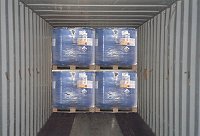 |
 |
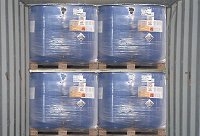
| Packing palletized hazardous materials with interlayer dunnage |
If the pallets or goods are more sensitive, interlayer dunnage made of lumber, hardboard, chipboard or similar materials should be put in place to distribute pressure.
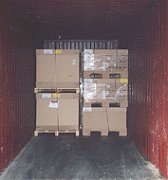 |
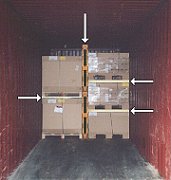 |
||
| Palletized cargo - incorrect | Palletized cargo - correct |
Even small gaps and slightly sloppy packing methods can cause the packages to cave in and goods to be damaged. If the pallets delivered are neatly packed and interlayer dunnage is used for packing, such shortcomings can be prevented. Even the smallest gaps must be filled, be it with wooden boards, airbags or, as here, with old pallets.
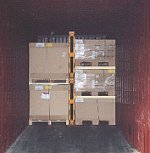 |
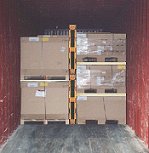 |
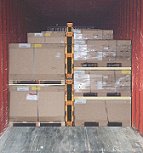 |
| Packing a 40' container with palletized cargo |
 |
|
 |
Deficiently packed palletized cargo |
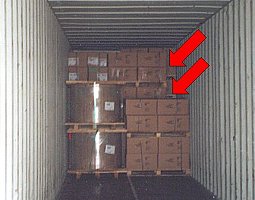 |
The shipping packages are not well packed. Interlayer dunnage is essential with the type of pallet base used. The gaps left are too big. | |
| Packing gaps = packing deficiencies |
Every packing gap constitutes a potential risk. Damage can only be prevented by absolutely compact stowage.
The greatest deficiencies which occur when packing palletized cargo are that the pallets are not properly packed and the pallet dimensions are not conformed to the containers used. A few examples follow:
 |
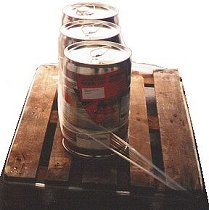 |
Who could load pallets like this without having to put an unusually large amount of effort into securing them? At the same time, such pallets are in contravention of the dangerous cargo regulations and the CTU packing guidelines. The general introduction to the IMDG Code reads.:
-
For the purposes of this Code, a "unit load" means a number of packages that are:
| 1.) | placed or stacked on and secured by strapping, shrink-wrapping or other suitable means to a load board such as a pallet; or; |
| 2.) | placed in a protective outer enclosure such as a pallet box; or; |
| 3.) | permanently secured together in a sling. |
- 10.18.2 packages that contain hazardous goods, that are permitted to be transported in accordance with the code, may only be transported in unit loads if the following conditions are fulfilled.
- 10.18.2.1 It may occur that the packages in a unit load will need to be separated. In this event, it must be ensured that the individual packages can be handled safely.
- 10.18.2.2 The unit loads should be compact, have as regular a form as possible, and for the most part, vertical sides. The top of the unit load should be level. It must be possible to stack the unit loads. They must be constructed and secured in such a way that it is unlikely that the individual shipping packages can become damaged.
- 10.18.2.3 The unit loads must be sufficiently strong to withstand repeated loading and stowing operations and they must be able to bear unit loads with a similar specific mass which are stacked on them to a height commonly occurring during transportation.
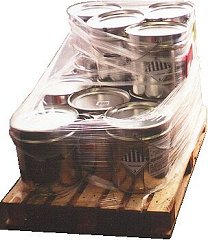 |
 |
What conclusion would one draw from a comparison of the text of the regulations with reality?
The CTU packing guidelines contain a similar comment under point 4.2.8:
- If dangerous cargoes are palletized or otherwise unitized they should be compacted so as to be regularly shaped, with approximately vertical sides and level at the top. They should be secured in a manner unlikely to damage the individual packages comprising the unit load. The materials used to bond a unit load together should be compatible with the substances unitized and retain their efficiency when exposed to moisture, extremes of temperatures and sunlight.
 |
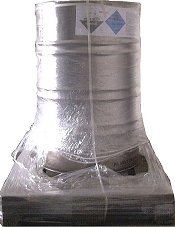 |
It may be noted also with regard to these requirements that there is general ignorance of the law and of transport safety.
 |
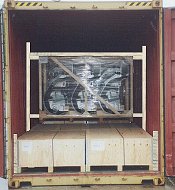 |
||
| Unsecured cargo | Secured cargo |
Although this cargo is not palletized, it resembles palletized cargo from the point of view of base and overall treatment. As is clear, appropriate compact stowage can be achieved without much effort.